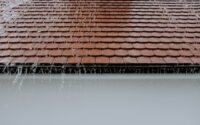Unveiling Ann Arbor’s Arboreal Underworld
Summer is an ideal time to inspect your trees for pests and diseases that threaten their wellbeing, saving both trees and money at the same time. A few minutes spent observing carefully could save both.
Be wary of any large silken tents, stunted tree growth or stripped leaves; look out for galls infections of leaves, stems, bark or bark infections; as well as for signs of bacterial wetwood, which kills host trees within three years.
Aphids
Aphids are sap-sucking true bugs with soft pear-shaped bodies that may be green, yellow, brown, red or black depending on the species. Aphids feed by sucking up too much sap from trees and shrubs, leading to stunted plant development and altered growth patterns. Ann Arbor Tree Services mentioned how these bugs transmit plant virus diseases as well as cause galls on specific plants (e.g. hackberry woolly aphid).
Honeydew produced by infected leaves and branches is used as an ideal environment for sooty mold to thrive, leading to widespread plant stress including wilted leaves, yellowing foliage and premature leaf drop. Established plants may tolerate moderate to heavy aphid infestations while young plantings are especially vulnerable; systemic pesticides should only be applied when temperatures are cool to prevent other beneficial insects from being killed off by such chemicals.
Scale Insects
Scale insects, similar to aphids, are sucking insects that feed on sap or the contents of plant cells, damaging plants by deformities, yellowing, or the death of affected leaves and branches. Scale insects often infest shrubs and ornamental trees but also pose risks in houseplants.
Adult female scale insects and immature nymphs of this insect species appear as round bumps on plant stems, twigs or trunks infested by them. Although their bodies lack distinct parts, immature nymphs may still be concealed behind a thick secretion of waxy material that encases their bodies.
Wingless scale species typically lack wings for mating and dispersal purposes. A good way to tell whether an insect is alive or dead is to try flipping off its waxy coating using either your fingertip or a sewing needle while being careful not to puncture through to its inner workings – many nymphs will bleed when exposed to air; hardy and some soft scale infestations can be controlled using dormant oil sprays that regulate insect growth regulation.
Weevils
Many weevils that damage fruit trees are small dark beetles with long snouts that feed off food products (lilac root borer and black vine weevil are among these), living up to eight months before wandering away (e.g. lilac root borer and black vine weevil).
Weevils feed by burrowing into buds and leaf stubs, often leaving round notches behind in unfurled leaves and buds, which may result in their death. Meanwhile, the otiorynchid weevil is known for damaging grafted bud wood as well as feeding on cut stems of fruit trees resulting in their deaths.
To prevent weevil infestation, inspect and discard containers containing grain products like dried fruit and cereal regularly. Keep foods stored in a basement or garage away from other foods and make sure cupboards and pantries remain free from crumbs. Preventative measures also include pruning rhododendrons to expose less trunk, coating plastic barriers with Tanglefoot, motor oil or Teflon to make them unclimbable by weevils, as well as using pruning rhododendrons so as to expose less trunk, and coating plastic barriers with Tanglefoot, motor oil or Teflon to ensure weevils cannot climb over them.
Bark Beetles
Over 600 species of bark beetles exist in North America, most commonly attacking conifers such as pine trees. Common pine pests include the Engraver Beetle and red and white Turpentine Beetles. Furthermore, in Southeast Michigan emerald Ash Borers commonly target Ash trees.
Identification of beetle infestations can be challenging and often goes undetected until a tree falls victim. Look out for round holes the size of pencil leads on trees infested by beetles; an “arching buckshot” pattern of holes shows where beetles have chewed through bark to reach wood beneath, where they lay their eggs.
Adult beetles are cylindrical and hard-bodied insects with black or brown coloring, elbowed antennae with alternating segments colored black or partly white and elbowed antennae that protrude at an elbowed angle. Many bark beetle species can be considered subsocial with their behavior ranging from aggregation and maternal care of offspring (Kirkendall et al. 2015) to expanding range with warmer minimum temperatures; many climate-limited species could see expanded distribution under warmer temperatures as well. Avoidance of injuries to roots/trunks/compacted soil compaction/overcrowding will help trees withstand beetle attacks more effectively.



